Painting Develops Creativity
Painting engages both sides of your brain, blending logic and intuition. The left-brain handles structure and technique, while the right-brain adds imagination and creativity. This unique combination helps develop problem-solving skills and fosters creative growth.
When you paint, you're constantly evaluating colors, proportions, and compositions. Your analytical side works on mixing the perfect hue, while your creative side envisions new landscapes or abstract forms. This back-and-forth strengthens neural pathways, making your mind more flexible.
The process also builds resilience. Facing a creative block? You learn to push through, experimenting and adapting. These problem-solving skills extend beyond art into everyday life.
Remember, you don't need to be born with an "artist's gene" to benefit. Anyone can start painting and witness their brain's dance between rationality and creativity.
With each brushstroke, you're not just creating art – you're exploring the depths of your own mind and growing in unexpected ways.
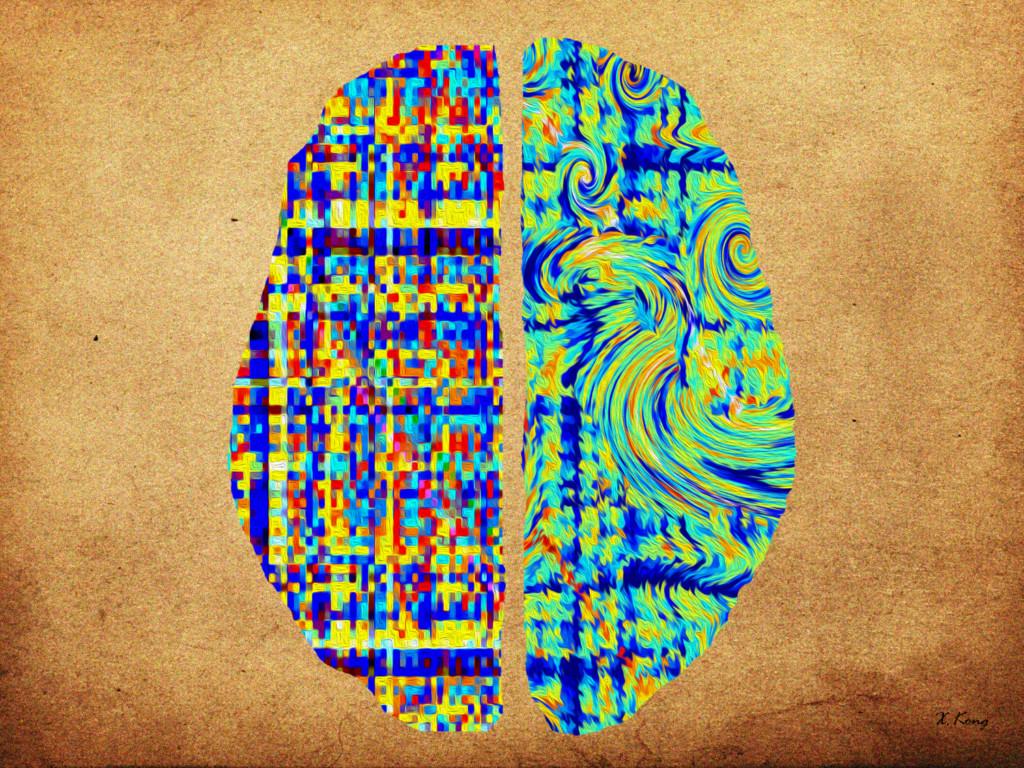
Emotional Wellbeing and Self-Expression
Painting is more than just creating pretty pictures – it's a powerful form of self-expression that can significantly impact emotional wellbeing. As you paint, you're engaging in a dialogue with your innermost feelings, often bringing subconscious emotions to the surface.
This process can be incredibly cathartic. Like a poet finding solace in words, a painter can release pent-up emotions onto the canvas. It's particularly beneficial for those who struggle with verbal communication, offering an alternative way to articulate complex feelings.
Art therapy harnesses this power, using creative processes to promote emotional healing. Therapists guide individuals through their artistic journey, helping them unlock parts of themselves that might be difficult to access through traditional talk therapy.
Benefits of Painting for Emotional Wellbeing:
- Encourages mindfulness
- Manages stress and anxiety
- Builds emotional resilience
- Fosters self-reflection
- Develops empathy
Painting also encourages mindfulness. The focus required pushes intrusive thoughts to the background, similar to meditation. This can help in managing stress and anxiety, fostering a more balanced mental state.
Moreover, the act of painting builds emotional resilience. Reworking a canvas teaches adaptation and acceptance of imperfection – skills that translate well to life's challenges. As you juggle colors and compositions, you're inadvertently learning to handle life's complexities with more grace.
Ultimately, painting serves as a mirror, reflecting emotions back to their creator. This self-reflection fosters empathy – both towards oneself and others. By engaging in this creative process, you're not just making art; you're crafting a deeper understanding of yourself and your emotional landscape.
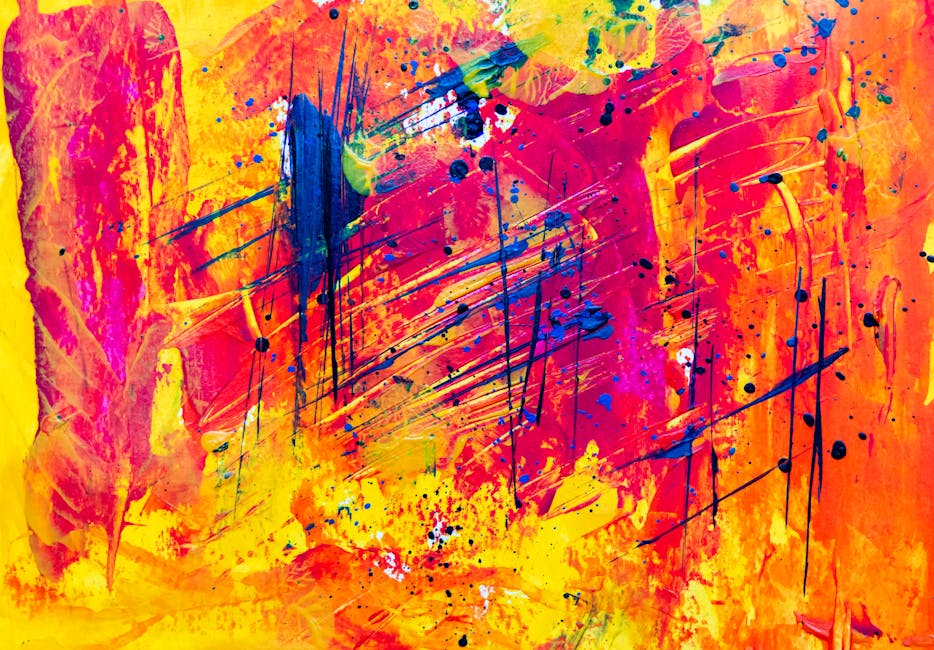
Stress Relief Through Painting
Painting offers a unique form of stress relief by creating a meditative space where daily worries fade away. As you focus on each brushstroke, your mind centers on the present moment, practicing a form of mindfulness that can significantly reduce stress.
This artistic process provides a temporary escape from life's pressures. Your canvas becomes a portal to a place where external demands don't exist, allowing you to explore thoughts and emotions freely. It's not about running away, but finding a mental refuge that rejuvenates you for future challenges.
The repetitive motions of painting echo the benefits found in practices like yoga or meditation. This rhythm can foster a state of flow, where your mind synchronizes with your actions, creating a serene dance of color and expression.
Painting also offers a sense of control that's often lacking in our chaotic lives. When the world feels unpredictable, having the power to decide what appears on your canvas can be reassuring. Every artistic decision reinforces your sense of agency, helping to balance feelings of powerlessness in other areas of life.
Real-life Examples of Stress Relief Through Painting:
- The stressed executive who finds balance through painting
- The overwhelmed caregiver who uses it as a form of self-care
In these moments, the act of painting becomes more than a hobby – it's a sacred ritual where stress melts away, replaced by a colorful escape crafted by your own hands.
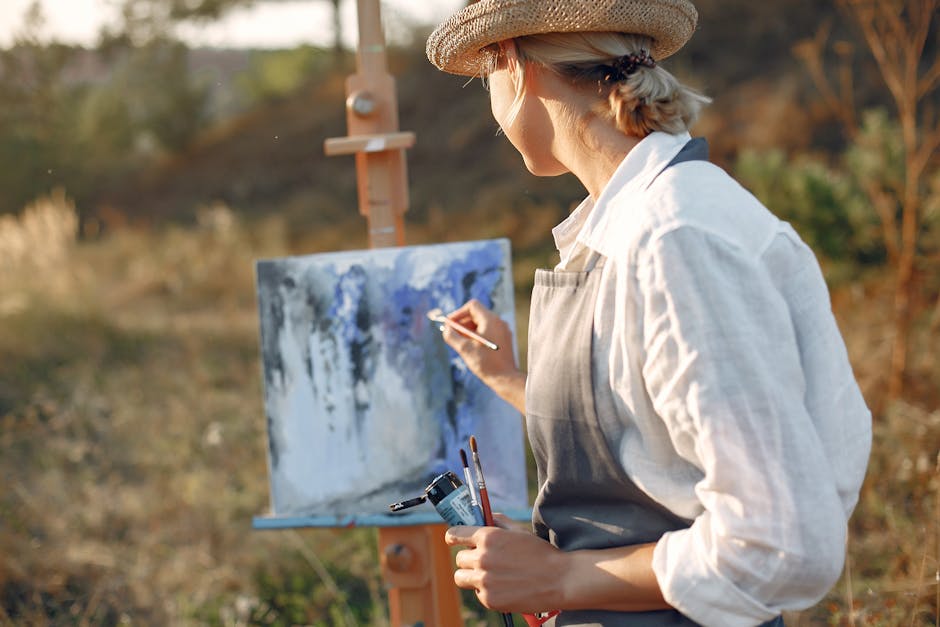
Improves Memory and Concentration
Painting isn't just about creating art – it's a workout for your brain. The process of choosing colors, planning compositions, and executing your vision engages various cognitive processes, particularly those associated with memory and concentration.
Research supports this idea. A 2015 study in Neurology found that adults who engaged in artistic activities, including painting, had a 73% lower risk of developing memory problems as they aged.1 This suggests that painting could play a role in maintaining cognitive health over time.
The level of focus required in painting also helps train your brain to block out distractions. Whether you're outlining delicate details or filling in broad areas, you're practicing sustained attention. This improved concentration can benefit other areas of life, from work tasks to personal relationships.
Cognitive Benefits of Painting:
- Exercises short-term and long-term memory
- Enhances neuroplasticity
- Improves ability to retain and recall information
- Boosts concentration skills
Painting also exercises both short-term and long-term memory. Remembering which colors blend to make a specific shade isn't far removed from recalling key details for a presentation or remembering names and faces. This mental exercise can enhance your overall ability to retain and recall information.
Moreover, learning new painting techniques or experimenting with different styles adds new synaptic connections in the brain, enhancing neuroplasticity. This adaptability can improve how you handle new challenges and absorb information in various aspects of life.
So, next time you pick up a paintbrush, remember you're not just creating art. You're participating in an enriching exercise that sharpens your mind, boosts your memory, and enhances your ability to concentrate. The vibrant world you're painting reflects a vibrant, engaged brain.
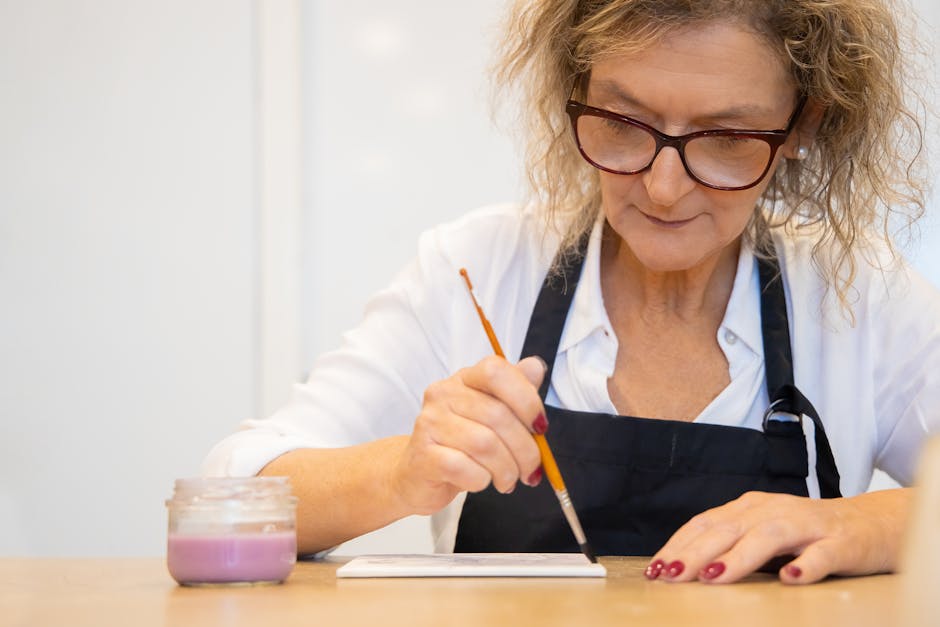
Enhanced Problem-Solving Skills
Painting is a constant exercise in problem-solving. From the initial contemplation of your subject to the final touches, every step involves making decisions that overcome challenges. Starting with a blank canvas, you decide on the subject and layout, known as composition. This sets the stage for your entire piece.
As you work, unexpected challenges arise. The blue you've mixed might be too dull, or the perspective you've chosen doesn't quite capture the depth needed. Rather than abandoning the task, you adapt. Adding a hint of another color, adjusting the angle, or experimenting with brushstrokes turns these hurdles into opportunities for creative solutions. This critical thinking process sharpens your cognitive flexibility—the ability to shift thinking strategies or adapt to new conditions.
These skills transcend the canvas, infiltrating your daily life. If you encounter a problem at work or in personal situations, you draw on the adaptability you've honed through painting. You start to view obstacles not as insurmountable blockages but as puzzles with multiple potential solutions.
The patience learned in painting is critical. Much like waiting for a layer of paint to dry before adding another, you learn the value of pausing and assessing in difficult situations. This perspective grants the ability to tackle complex tasks with a calm, composed mindset, leading to more effective problem-solving.
Real-world Applications:
- Teachers using inventive methods to engage students with varying learning styles
- Business executives tackling logistical challenges with artistic finesse
Each artistic endeavor, complete with its surprises and detours, slowly transforms your approach to life's challenges. Your ability to visualize and implement solutions becomes more intuitive, nimble, and innovative. You find that your cognitive toolkit expands, ready to handle both everyday annoyances and larger puzzles with a creative zest.
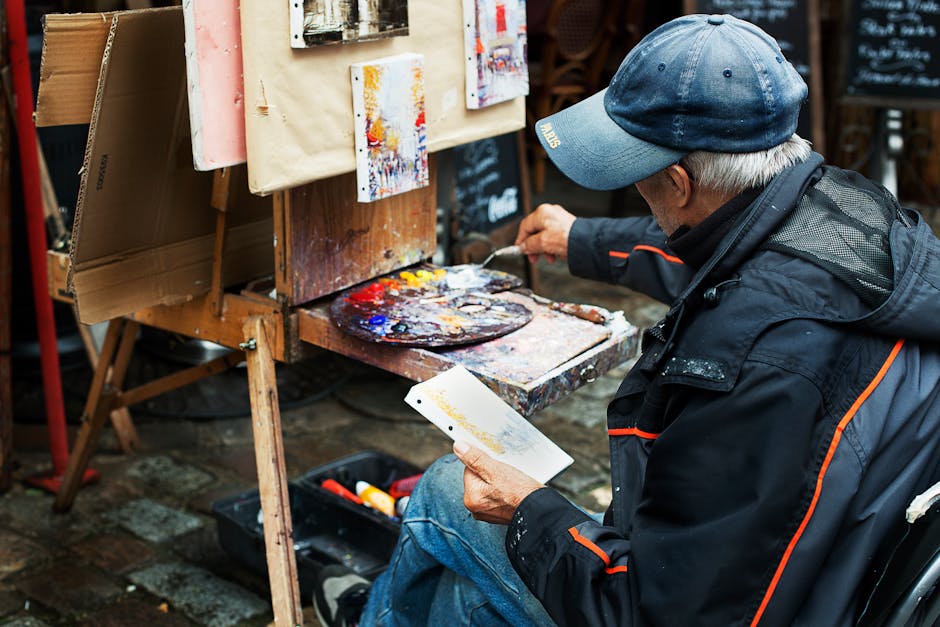
Builds Fine Motor Skills
Painting is more than a feast for the eyes—it's a workout for your hands. Every stroke of the brush calls upon intricate hand movements, enhancing dexterity and fine motor skills crucial for countless everyday activities. From the lightest flick of a thin brush for detailing to the broader strokes required for backgrounds, these movements coordinate the muscles in the hands and fingers, fostering precision and strength.
When you paint, you orchestrate a harmonious interplay between your eyesight and hand movements, improving your hand-eye coordination. This precise coordination translates into better control and reflexes in physical tasks far beyond the art studio. Whether you're typing on a keyboard, handling small objects, or even playing a musical instrument, the refined motor skills developed through painting prove invaluable.
Individuals recovering from hand injuries often use painting in rehabilitation routines to restore mobility and strength. Each brushstroke can be adjusted to the patient's ability, gradually increasing in complexity as motor skills improve. The therapeutic benefits extend not just to motion but also to sensory feedback. The feel of the brush, the texture of the canvas, and the consistency of the paint all contribute to sensory awareness, enriching the tactile experience and honing motor functions.
Benefits of Painting for Physical Well-being:
- Enhances fine motor skills
- Improves hand-eye coordination
- Stimulates muscle control
- Sharpens spatial awareness
- Provides low-impact exercise
Painting offers a tranquil yet stimulating form of exercise. It lacks the jolts of high-impact sports, making it an ideal activity for those who might find strenuous physical exertion challenging yet still wish to maintain dexterity and coordination.
The health benefits extend further. Engaging in an activity that nurtures mental wellness and physical health creates a holistic approach to well-being. By intertwining the benefits of mental focus, emotional expression, and physical control, painting offers a unique combination that enhances overall life quality.
"Picking up that brush isn't just about creating art; it's about fortifying your hands, honing your coordination, and ultimately adding a vibrant stroke to the canvas of your well-being."
Social Connectivity Through Painting
Beyond individual introspection and creativity, painting can transform into a shared experience that strengthens social connections, enriches communication skills, and fosters communal harmony. The canvas becomes not just a medium for self-expression but also a conduit for forming meaningful relationships.
Group Painting Activities:
- Team-building exercises: Corporate events where colleagues create collaborative murals
- Multicultural gatherings: Overcoming language barriers through artistic expression
- Family bonding: Parents and children creating communal artwork
Group painting activities can serve as excellent team-building exercises. Picture a corporate event where colleagues, often confined to office roles, are handed paintbrushes and tasked with creating a collaborative mural. The barriers of formality drop, replaced by a shared sense of playful experimentation. As they paint side by side, team members communicate more openly, discovering new facets of each other's personalities. This shared creative endeavor promotes collaboration, problem-solving, and mutual respect, ultimately translating into a more cohesive work environment.
Painting also nurtures nonverbal communication skills. Art has a unique way of conveying complex emotions and ideas that might be difficult to articulate through words. In a group setting, participants can interpret and respond to each other's artistic expressions, fostering a deeper understanding and connection. This makes painting particularly powerful in multicultural groups, where language barriers might exist.
For families, painting can become a cherished bonding activity. Imagine parents and children gathered around a kitchen table, each contributing to a communal artwork. This shared creative time promotes open communication and strengthens familial ties. It becomes a canvas for expressing love, laughter, and collective imagination.
Whether through group painting sessions, painting holidays, or team-building activities, this artistic practice fosters a sense of community, understanding, and mutual respect. As the colors blend and brushstrokes interweave, so do the connections between individuals, creating a rich tapestry of social interaction and collective creativity.
Boosting Self-Confidence
Completing a painting project can be a personal triumph. With every finished piece, an artist feels a sense of accomplishment that extends beyond the canvas, boosting self-esteem and overall well-being.
Imagine the satisfaction of finishing a painting. From sketch to final touch, each step demands focus and creativity. As you view your creation, a feeling of achievement washes over you. This journey involves overcoming artistic challenges, which reinforces resilience and builds confidence.
Overcoming these challenges is an exercise in problem-solving. Mixing the perfect shade or achieving a desired texture may require multiple attempts. Each success reinforces belief in your abilities, influencing how you approach problems in other areas of life.
Consider a novice painter who gains confidence through practice. Initial attempts might be rough, but perseverance pays off. Each completed canvas stands as proof of progress, fostering a sense of self-worth. The artist begins to trust their instincts, understanding that persistence leads to growth.
Painting cultivates a mindset where mistakes are opportunities for learning. When a painting doesn't turn out as planned, it offers a chance to experiment and evolve. This resilience builds a positive self-image, reinforcing the idea that you can learn and thrive even when things aren't perfect.
Confidence gained through painting often extends to daily life. An artist who shares their work in an exhibition or online gallery demonstrates growing self-esteem. Positive feedback further bolsters confidence, making them more open to new challenges.
The tangible nature of artwork serves as a constant reminder of one's capabilities. Hanging your art isn't just decorating; it's celebrating your skills and determination daily. This can encourage persistence in other areas of life.
For those who struggle with verbal expression, art can significantly enhance self-esteem by providing an alternative outlet. Successfully conveying ideas or emotions through art validates one's expressive abilities, leading to greater self-assurance.
The communal aspect of art creation also plays a role. Workshops, classes, and art groups offer spaces to interact with like-minded individuals. Sharing work, receiving feedback, and appreciating others' art fosters a supportive environment where confidence can grow.
In summary, completing a painting project is a transformative experience that embodies perseverance and personal growth. Overcoming artistic challenges strengthens self-worth and confidence that extends far beyond the canvas. Every brushstroke cultivates an enduring belief in one's abilities, laying the foundation for a confident self.
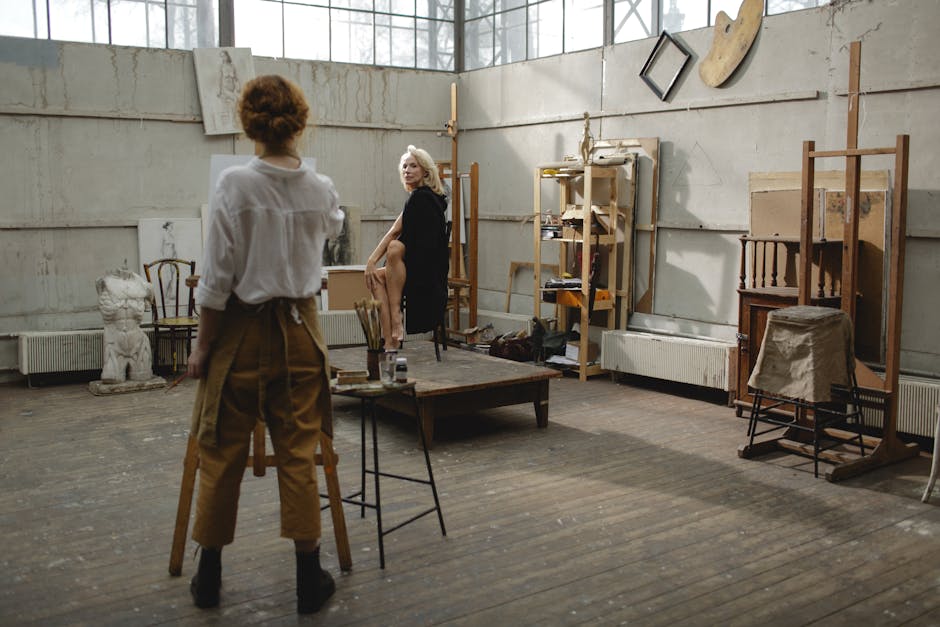
Art Therapy and Mental Health
Art therapy is a field where art meets psychology to foster healing and personal growth. It goes beyond painting for self-expression, exploring areas where art becomes a tool for emotional and psychological well-being. Unlike self-directed painting, art therapy is guided by a trained professional who tailors the experience to support individual mental health needs.
Think of art therapy as a structured exploration combining creativity with therapeutic techniques. It's like a silent conversation on canvas, where colors and shapes replace words. Art therapists use this visual dialogue to help clients understand and manage their emotions more effectively.
Key Aspects of Art Therapy:
- Accessibility: Provides a bridge for those who struggle with verbal expression
- Emotional Release: Allows for externalization and confrontation of internal struggles
- Self-Reflection: Promotes understanding of one's emotions and experiences
- Guided Process: Facilitated by trained professionals to align with therapeutic goals
Research supports the effectiveness of art therapy in treating various mental health conditions. Studies have shown it can reduce symptoms of anxiety, depression, and trauma-related disorders1. The tactile and immersive nature of creating art provides a therapeutic escape, allowing individuals to channel their emotions constructively.
"Art therapy combines the power of art with psychology to facilitate healing and growth."
Art therapy has diverse applications:
- For children with autism: Offers a non-verbal way to express and understand emotions
- In dementia patients: Stimulates cognitive functions and improves quality of life
- Veterans with PTSD: Helps process traumatic experiences that are difficult to discuss
In clinical settings, art therapy can be particularly transformative. Research has shown that it can reduce the need for restrictive practices in mental health units, promoting a safer and more therapeutic environment2.
Art therapy also enhances social connections and emotional intelligence. Group sessions enable individuals to share their creations and stories, fostering community and mutual support. In psychiatric wards, these sessions offer a platform for interaction and collective healing.
In conclusion, while self-directed painting offers benefits for mental health, art therapy provides a structured intervention that transforms the canvas into a sanctuary for the mind and soul.
Painting offers more than just a creative outlet. It's a journey that enhances cognitive abilities, emotional well-being, and social connections. Each brushstroke contributes to personal growth and resilience, making painting an enriching experience for anyone willing to give it a try.
























